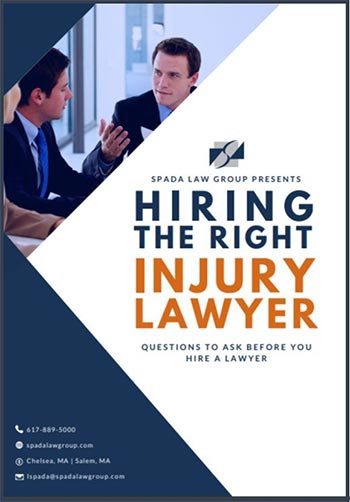
Handrails and stair rails serve crucial safety functions. In addition to providing a hand grip to prevent falls, handrails act as a barrier to preventing someone from falling to the floor or ground below. If the handrail is missing or broken, you or a visitor may be exposed to serious harm or even death. In Massachusetts, The State Building Code spells out in great detail the requirements of where and when handrails are required as well as the specifics of their dimensions. Failure to comply with these regulations may be used as evidence against the property owner in any legal action that results.
Who’s Liable For Injuries From Broken Or Missing Handrails?
Property owners are responsible for maintaining their premises in a reasonably safe condition for guests and others who are legally on their property. If you are injured due to an unsafe condition, the property owner may be liable. Damages in these cases are typically paid by homeowners’ insurance or business general liability insurance. But beware, if a property owner does not have adequate insurance to cover the damages he or she may be at risk of losing personal assets such as their home if someone is seriously injured on their property. We can’t stress enough the prudence of good maintenance AND adequate insurance when owning property.
What Causes Most Falls on Stairs?
Below are several common causes of falls on stairways and some common sense advice on how to reduce the risk of falls. We at Spada Law Group have seen and handled each of these scenarios in our practice.
- Falls on stairs are most often caused by slipping or tripping (hence the great importance of handrails!). Staircases should have even surfaces and even tread heights. Steps should be free of clutter or other obstacles. Loose stair treads, frayed carpet or other deteriorating coverings should be repaired or replaced.
- Lack of handrails contributes to many falls on stairs and some of the most serious cases we’ve seen fall into this category. There should be handrails on both sides of a staircase and they should always meet local building codes.
- Many falls happen on steps that are in places where people don’t expect them, such as one or two steps in a hallway or doorway. These steps should be marked with warnings that can actually be seen (colored paint or signage at eye level for example). Staircases should be well lit, with light switches at the top and bottom.
- Outdoor staircases should be cleared of snow and ice as quickly as possible.
Don’t Be A “Negligent” Property Owner
The following are examples of negligence that we have encountered in our practice:
- Failure to install a handrail or guardrail where one is needed. We have seen and represented individuals who have suffered serious injuries, including death, from missing and inadequate handrails.
- Failure to repair a broken handrail or guardrail. Handrails loosen over time. They must be maintained in order to retain their structural integrity.
- A guardrail or handrail that is not installed at a proper height. Handrails are of no use if a person can’t reach it or has to bend to grasp it. We have a case likely to go to trial in 2019 that involves this very problem.
For those injured by such negligence, it is important to take pictures of the broken or missing handrail before the property owner makes repairs to assist in proving your case. It is also important to get legal advice as quickly as possible since almost all of these cases require the retention of an expert to visit the scene and establish whether Code violations exist.
See our Results page for more information about recoveries Spada Law Group has obtained for our clients. Every case is different, and past results do guarantee a similar outcome can be achieved in another case. However, they do indicate a firm’s experience with cases involving accidents that caused serious injuries.
If you or a loved one has questions about an injury that occurred on a stairway in Massachusetts, give us a call. We are here to help.



